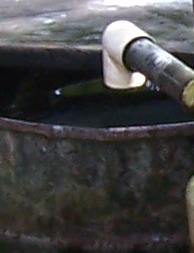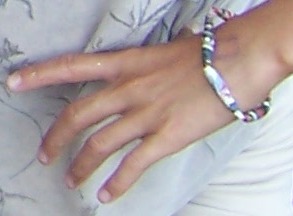Don’t Miss this Opportunity to See the World!
October 30, 2009
Nicaraguan Pen Pals
October 30, 2009
Girls who came to the ¡Saludos de Nicaragua! each got a letter from a Nicaraguan girl or boy. Some of the girls wrote letters at the party while others decided to take their letters and write more at home.
We’ll be collecting all of the letters in November so that we can send them to Nicaraguan children before they go on their summer vacation. (Summer vacation in Nicaragua is in December and January!)
If any of you would like to write a letter to a Nicaraguan kid, you can drop off your letters at the Sahuaro Girl Scout Council–just be sure that they are labeled with another piece of paper taped to the outside of the envelope: Letters for Nicaragua, Attention Kristen Curé
Be sure to send me an email and with your contact information so that I can contact you when we get letters back!
Would you like to include some Spanish in your letter?
Here are some common spanish phrases
Enjoy some images from this summer’s trip to Nicaragua!
¡Cantemos!
September 9, 2009
Last month, when I was in Nicaragua, I shared the recording of Girl Scout songs that we made at the ¡Vamos a Nicaragua! Party. Then, the girls and boys in Nicaragua taught me many of their songs. Here are just a few that I caught on video:
The video starts with everyone saying “Good morning from Nicaragua” in English and then “Buenos dias de Nicaragua” in Spanish.
Los Pollitos is a very popular song–every kid in Nicaragua knows this song about little baby chicks.
This is a short singing game.
This one, Doña Ana No Está Aquí, is a singing game. Two girls are in the middle while everyone else holds hands and walks around them in a circle. Each verse says: Doña Ana isn’t here, what is she doing? Each time the question is asked, the answer is that she is busy doing something: brushing her hair, changing her clothes, fishing…until at the end, the last answer is: she has died. The girl in the center is Doña Ana and at the end, she has to chase the other girls until she catches one to go in the middle.
Just like here, Nicaraguan kids of all ages love to sing!
Come to the ¡Saludos de Nicaragua! Party this Thursday, September 10 and you’ll get learn some other Nicaraguan songs!
Bathroom Issues
August 29, 2009
When you don’t have running water, you also don’t have toilets. What do people without toilets do when they have to go to the bathroom?
Some people find a spot in behind their coffee or fruit trees.
What impact do you think this would have on the environment? On the groundwater that supplies people’s wells with drinking water? Can you think of a better alternative?
Within the past many years, there have been many community development projects with the main focus of building latrines or outhouses for people who live in areas where a toilet is not an option. Outhouses can help protect the drinking water by keeping the bacteria in human waste from washing into a stream or leaching into the groundwater supply.
In the rural community where I lived, toilets are not an option because they use far more water than any family could afford to waste. Instead, families build outhouses.
Where Do You Get Your Water?
August 27, 2009
From the sink, right? Or the tap.
Water is the focus of the Brownie level Journey 2: WOW!
Global water issues have a major impact on the environment.
What is the water supply like in the countryside of Nicaragua where I lived, on the edge of the rain forest?
Let’s start by taking a look at some rural Nicaraguan sinks:
In the countryside in Nicaragua, most people have to go to a well to get water.
Then they fill up buckets, or gallon jugs to carry water back home.
Within the past year, the rural community where I lived worked with the local government to bring running water to almost all of the houses of the community. After months of hard work of digging trenches and laying pipe, now families in the community can turn on the tap and get cold, clean water.
Each house in the community now has one water faucet in the back yard. Many families still fill buckets with water, but now from the faucet in their yard instead of from the neighborhood well. Some families made recycled sinks by turning car tires inside-out.
Even though it rains a lot where these Nicaraguans live and there are plenty of rivers and streams, tap water can be expensive, so people try to conserve water when they can. Families don’t have the luxury of a washing machine to wash dirty clothes (a washing machine would use far too much water and electricity for any family to be able to afford it), so people still wash clothes in the traditional way, with a bucket of water on a rock.
Some families can’t even afford to use their tap water to wash their clothes. Other families still rely on well water for drinking water and don’t have the time to haul buckets and buckets of water to their homes to wash clothes. How do these families wash their clothes?
They use the very traditional method:
People who have no other option continue to wash clothes in rivers and streams. How do you think soap and bleach residues affect the rivers and streams? What do you think people (with little or no money) could do to lessen the negative impact on their environment’s water supplies?
You’re invited! Bring a friend!
August 27, 2009
Finding New Green Uses for Old Things
August 25, 2009
As I mentioned in the last post, Nicaraguans often find many creative ways to reuse old or broken items. Part of this resourcefulness is in response to the lack of an organized trash collection in rural areas. In a rural community in Nicaragua, people must dispose of their own trash, which in many cases, means burning trash. Nicaraguans are also pretty creative when it comes to reusing old things because they don’t have much extra money to go and buy something new–most people in the countryside grow their own food and often don’t have a lot of harvest left over that they can sell. As a result, Nicaraguans try to make whatever they need out of materials at hand, which often means recycling a broken item into something else.
What do you think of these recylced items?
Nicaraguans often reuse old car and bus tires. Adults can turn the tires inside out to make large planters for vegetables and herbs, or even basins to collect water!
What kinds of new things could you make out of some of the old items in your trash or recycling cans? Share your ideas here!
Reusing and Re-purposing in Nicaragua
August 17, 2009
In general, Nicaraguans are quite practiced and creative when it comes to reusing and re-purposing old or worn-out items. Almost everything in Nicaragua gets repaired and repaired and repaired and then, when a repair won’t fix it, Nicaraguans look for a new use for the item. One of the most fun examples of re-purposing can be found in a Nicaraguan garden. Broken water buckets, flat tires, old soda bottles, damaged rubber boots can become planters for vegetables, herbs or flowers. (I’ve been collecting photos of some of these creative flower pots, once I return to the US, I´ll be able to upload more photos.)
I decided to share some of the activities from the Girl Scout Journey 2 (It’s Your Planet-Love It!) with Nicaraguan girls–after all, all efforts to protect our environment and reduce waste are connected around the world.
One of the activities we did was make beads out of old magazines. (This fits into the Junior level Journey 2: Get Moving!) We then made bracelets and necklaces with the beads.
Quick Update
August 15, 2009
I just arrived in the city of Esteli last night, after spending two weeks in the rural village where I lived as a volunteer. The girls in Jinotega loved the activities and I have many pictures and letters to share. The Internet connection here is not the best, but I’ll try to upload some pictures within the next day or two.




























